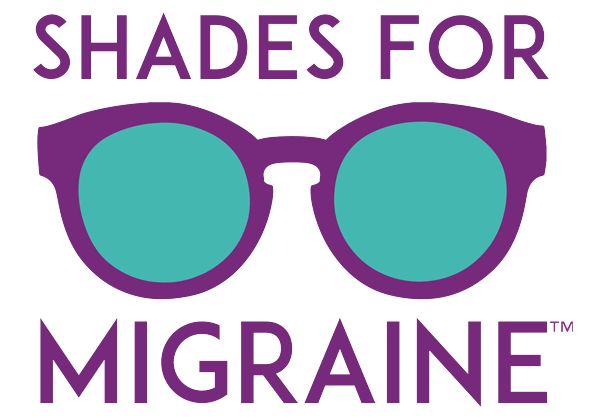Migraine: What are the lesser-known symptoms and how can you help? #ShadesForMigraine
Published 15 Jun 2024 • By Somya Pokharna
Migraine is often misunderstood as simply severe headaches. However, migraine is a complex neurological disease that can affect the entire body, showing up as a variety of symptoms that many people might not immediately associate with migraine. A simple yet helpful acronym, HEADS, can be used to recall these signs and encourage individuals to get checked for migraine.
So, what are these signs? How can you make a difference in raising awareness of migraine disease?
Read this article, created in association with Shades for Migraine, to learn more about these symptoms and join us in celebrating Shades for Migraine Day on June 21.

Migraine disease affects 1 in 7 people worldwide. This statistic means that nearly everyone knows someone who suffers from migraine, whether they realize it or not. Understanding the diverse symptoms of migraine is crucial for providing support and empathy to those affected.
What are some lesser-known symptoms of migraine?
An easy way to remember the lesser-known migraine symptoms that make life difficult is by using the acronym HEADS.
H - Headache
The most common and well-known symptom of migraine is the headache. However, even this is more complex than a typical headache.
- Headache: A migraine attack often presents as intense, throbbing pain on one side of the head, though it can affect both sides. The pain can be debilitating, lasting for hours or even days, and is often accompanied by nausea and sensitivity to light and sound.
- Aura: Auras are sensory disturbances that can occur before or during a migraine attack. These can be visual, such as seeing flashing lights or zigzag patterns, sensory, like tingling in the hands or face, or even motor, involving muscle weakness.
E - Ear Symptoms
Migraine can also affect the ears, causing symptoms that are often mistaken for other conditions.
- Ear pain: Some people with migraine experience pain in one or both ears that can be sharp and sudden or dull and constant.
- Ear pressure: A sensation of fullness or pressure in the ears can accompany migraine, similar to the feeling experienced during changes in altitude.
- Tinnitus: Ringing or buzzing in the ears, known as tinnitus, is another symptom that can occur.
A - Auditory
Migraine can significantly impact hearing and auditory processing.
- Difficulty hearing: During a migraine, some people may experience temporary hearing loss or muffled hearing, making it difficult to understand conversations.
- Sensitivity to sound: Known as phonophobia, this symptom makes normal sounds seem unbearably loud and painful. Everyday noises can trigger or exacerbate migraine attacks.
D - Dizziness
Migraine can also lead to issues with balance and spatial orientation.
- Balance difficulties: Some people with migraine disorder have trouble maintaining their balance, which can increase the risk of falls and accidents.
- Vertigo: Vertigo, a sensation of spinning or dizziness, is a common symptom. This can be extremely disorienting and may also cause nausea and vomiting.
S - Sinus
Sinus symptoms are often misattributed solely to sinus infections or allergies, but they can also be related to migraine.
- Sinus pain: Migraine can cause pain in the sinus areas, including the forehead, cheeks, and around the eyes. This pain can be sharp and intense.
- Sinus pressure: Pressure and congestion in the sinuses are common during a migraine attack. This can lead to a feeling of heaviness in the face and difficulty breathing through the nose.
- Nasal blockage: Nasal congestion or blockage can also occur, making it difficult to breathe and exacerbating the headache.
How can you make a difference?
There are many ways you can help raise awareness about migraine and support those who live with this debilitating condition.
Join Shades For Migraine
One simple yet impactful way to show your support is by participating in the Shades for Migraine campaign. On June 21st, post a photo of yourself wearing sunglasses on social media with the hashtag #ShadesForMigraine. This gesture helps spread awareness and shows solidarity with those suffering from migraine disease.
Participate in the HEADS Registry
If you or someone you know experiences any of the symptoms mentioned above, consider joining the HEADS Registry. This registry aims to gather data on sinus, vestibular, and migraine symptoms to improve understanding and treatment of these conditions. Your participation can contribute to important research that could lead to better management strategies for migraine.
Key Takeaways
Migraine is far more than just a headache. It is a complex disease that can affect multiple systems in the body, causing a wide range of symptoms. By increasing awareness and understanding of these symptoms, we can better support those who live with migraine and contribute to efforts to find more effective treatments. Join the movement today and help make a difference in the lives of millions affected by migraine disease.
This article was written in association with

Give it a "Like" and share your thoughts and questions with the community in the comments below!
Take care!

 Facebook
Facebook Twitter
Twitter



